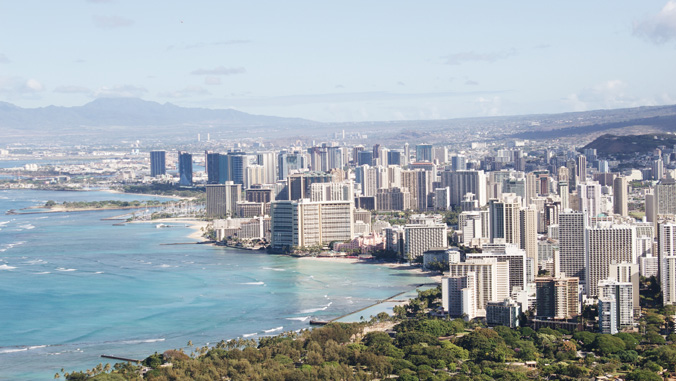
Up to 42% of Hawaiʻi residents stayed home when the COVID-19 pandemic ramped up in April, according to new information from the University of Hawaiʻi Economic Research Organization (UHERO). That is more than double the amount of residents who stayed home prior to the pandemic.
A new UHERO dashboard offers a detailed picture of people’s movement around Hawaiʻi during 2020. Using anonymous Hawaiʻi cellular location data, experts said it can be helpful in gauging the frequency of in-person interactions and the probability of future coronavirus spread.
Data used in the dashboard comes from Safegraph, which collects cellular location data from the apps that run in the background of many people’s smartphones. It is anonymous and represents a selective sample of the population. Information regarding the sample and Safegraph’s methodology can be found on its website.
The dashboard provides insight into how mobility varies across the state, including variations across neighborhoods, islands, zip codes and census tracts. It also looks at the amount of foot traffic, proxied by the number of smartphones, at locations such as retail stores, hotels, restaurants, gyms, schools, colleges/universities and hospitals.
Findings include:
- Prior to the pandemic, about 20% of Hawaiʻi residents stayed home on a given day. This percent rose in March and April and peaked at 42% before declining. Another peak occurred in August (40%), which corresponded with the height of COVID-19 infections in the state. Since then, numbers have again fallen and hovered around 32% at the end of November.
- Oʻahu residents stay home at slightly higher rates than neighbor island residents.
- Stay-at-home rates for residents living around Waikīkī have recently fallen to 25%, below the state level of 32%.
- There is no apparent correlation between average income within a neighborhood and the stay-at-home rate for that area.
- While retail stores recently experienced 60% of the foot traffic that was typical before the pandemic, foot traffic in hotels is down to 30% of pre-pandemic levels.
The dashboard is regularly updated and contains data through the Thanksgiving holiday. That data suggests that many heeded public health warnings to avoid Thanksgiving gatherings.
UHERO is housed in the UH Mānoa College of Social Sciences.

